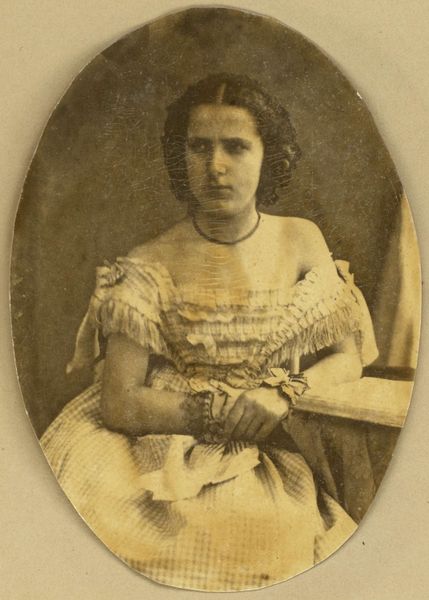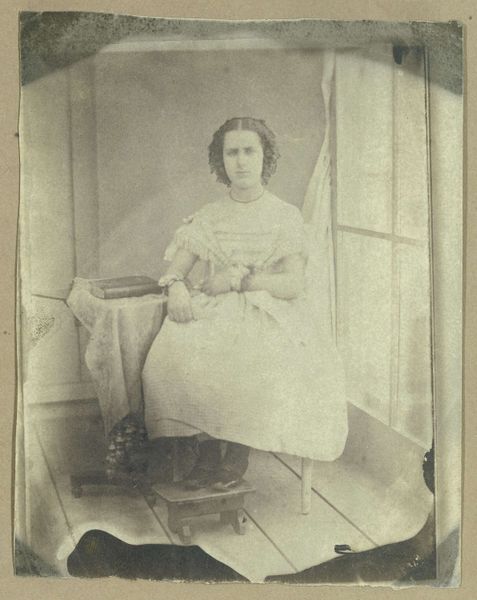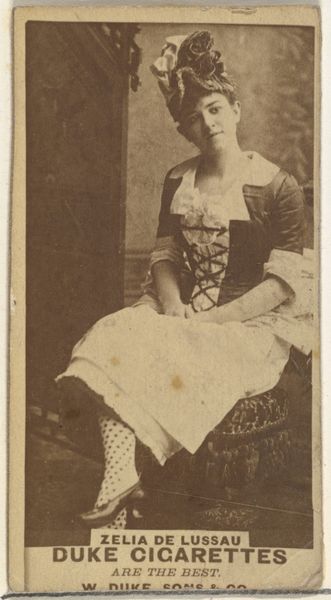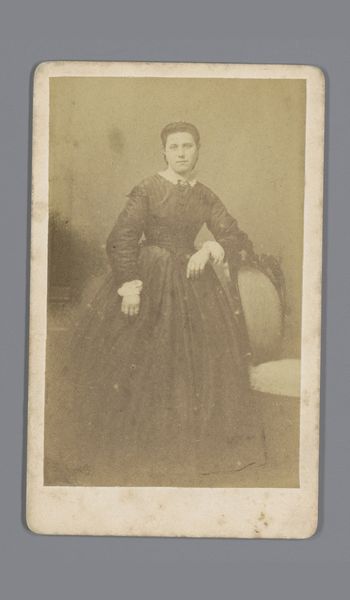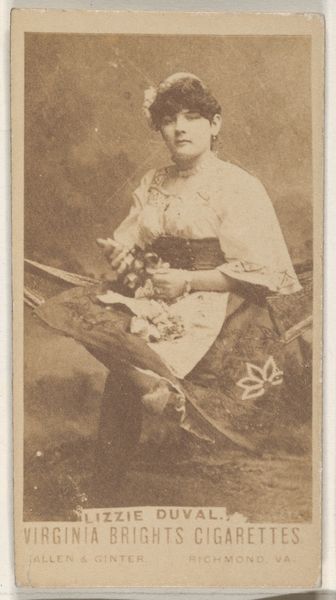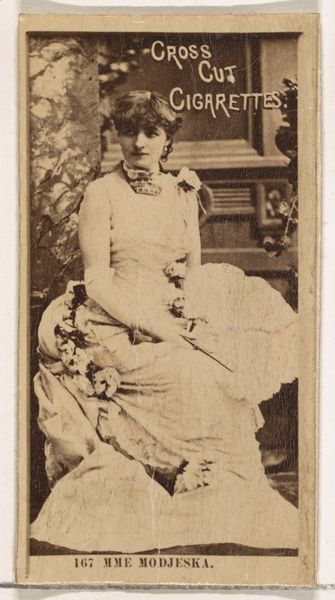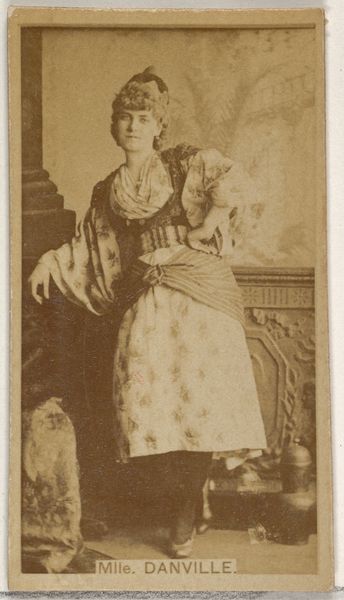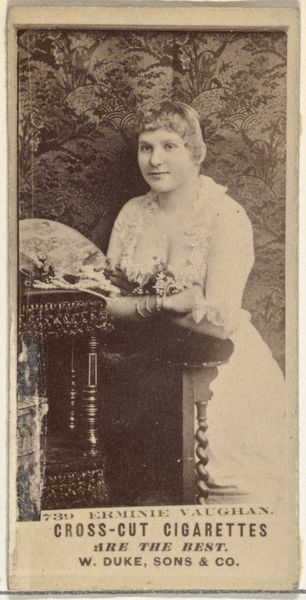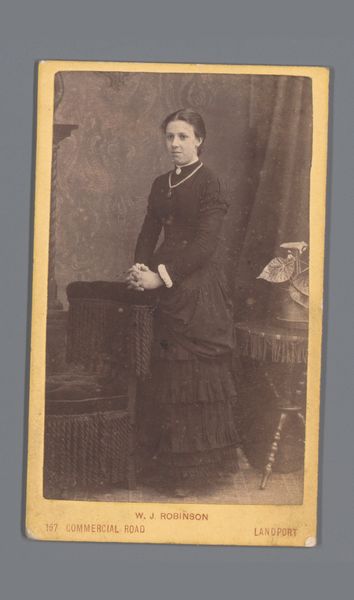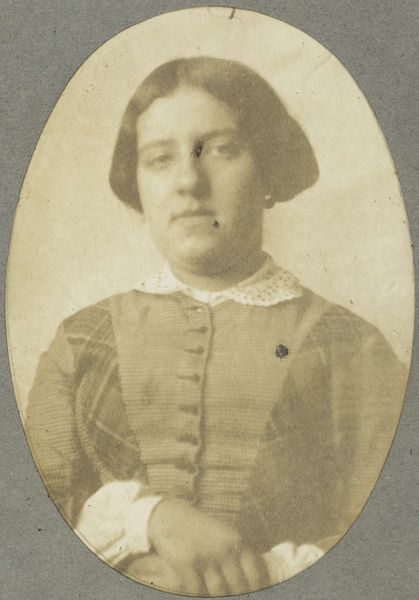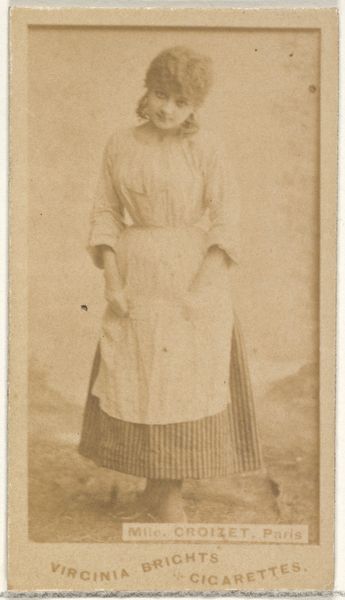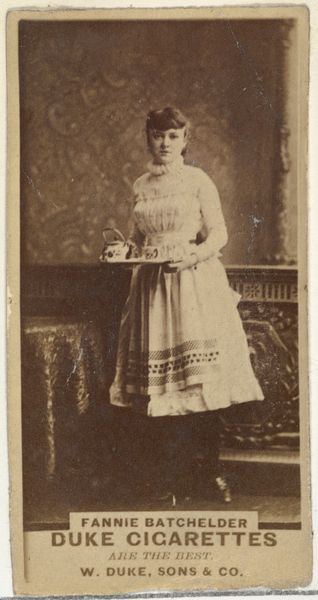
photography
#
portrait
#
still-life-photography
#
photography
#
portrait reference
#
19th century
Dimensions: height 100 mm, width 64 mm
Copyright: Rijks Museum: Open Domain
Curator: Welcome to the Rijksmuseum. We are standing before an early photographic portrait titled "Portret van Anna-Gratia Asser," created around 1854 by Eduard Isaac Asser. Editor: The oval frame and sepia tones give it such an antique feel, almost dreamlike. Her pose seems formal but there's also a vulnerable quality to it. The light is fascinating too. Curator: Indeed. Asser was a prominent figure in the introduction of photography to the Netherlands. Looking at this work within that context, we see the burgeoning rise of photographic portraiture as a challenge to traditional painted portraiture. Editor: It's interesting to think about who had access to this technology. It’s a powerful marker of class and status at the time. Do we know much about Anna-Gratia Asser herself? What were the politics of representation at the time? Curator: While details of Anna-Gratia’s individual life remain scant, we can contextualize this within 19th-century Dutch society. Portraiture, even in this photographic form, signified a certain level of social standing and perhaps aspirations. It reflected evolving social dynamics, where the middle class sought representation in ways once exclusive to the aristocracy. Editor: I wonder about her agency, you know? Her gaze doesn't quite meet ours; she looks just off to the side, in quiet defiance maybe. Or is it simply that she was uncomfortable? What was it like for women, to have their image captured, often in a way designed to uphold very narrow ideals of femininity? Curator: Precisely. That tension between capturing a likeness and conforming to societal expectations is crucial. As photography developed, these portraits played a role in shaping and reinforcing visual culture. And what role this particular photographic family was playing within it. Editor: Thank you, this piece makes me consider how deeply intertwined representation, technology, and identity really are, and I appreciate how it echoes through time. Curator: A poignant note on which to reflect.
Comments
No comments
Be the first to comment and join the conversation on the ultimate creative platform.
